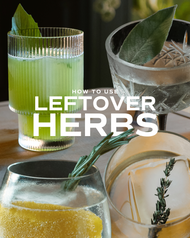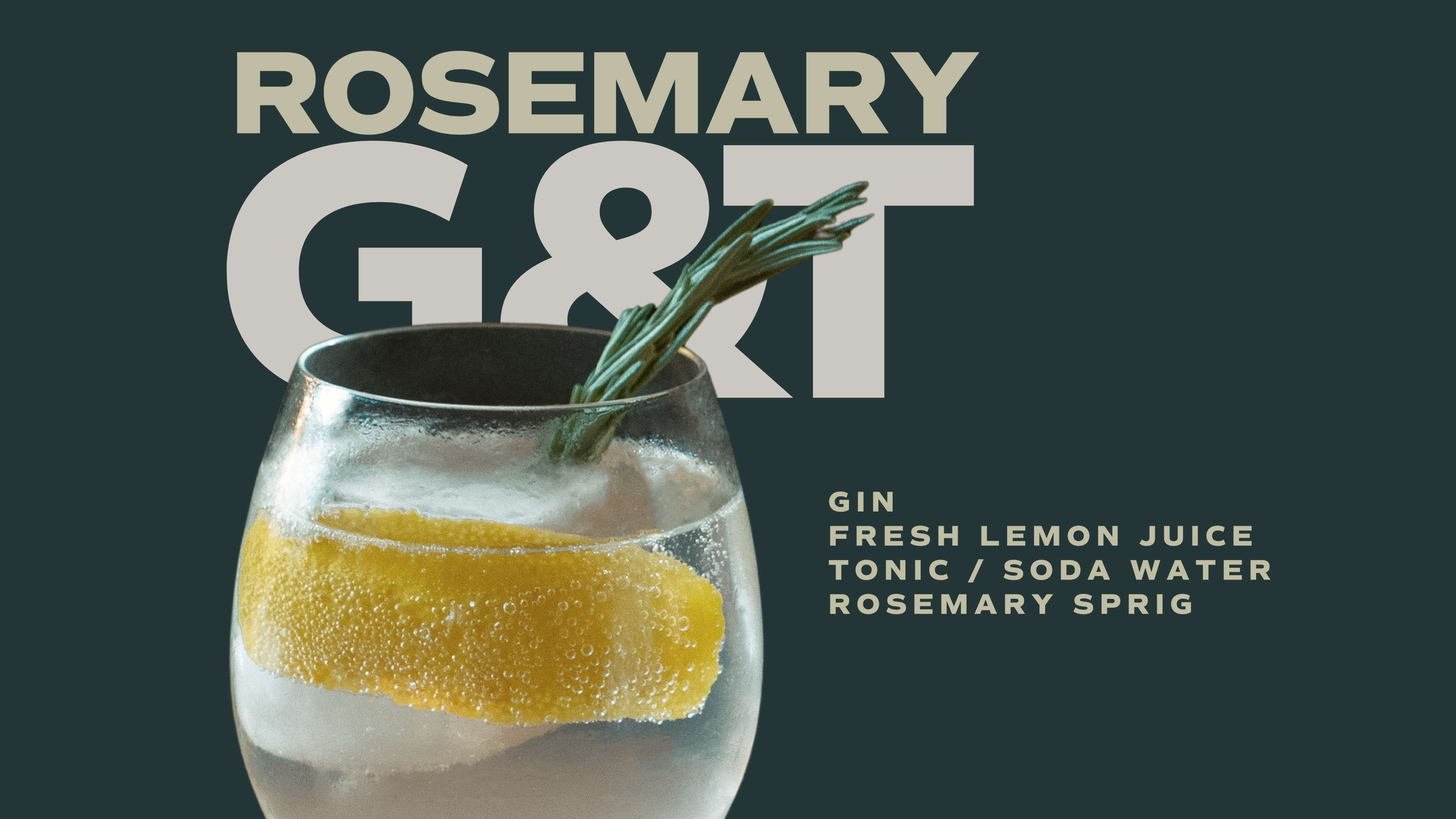Savoury Spring Cocktails to Make with your Leftover Herbs
7 Apr 2024
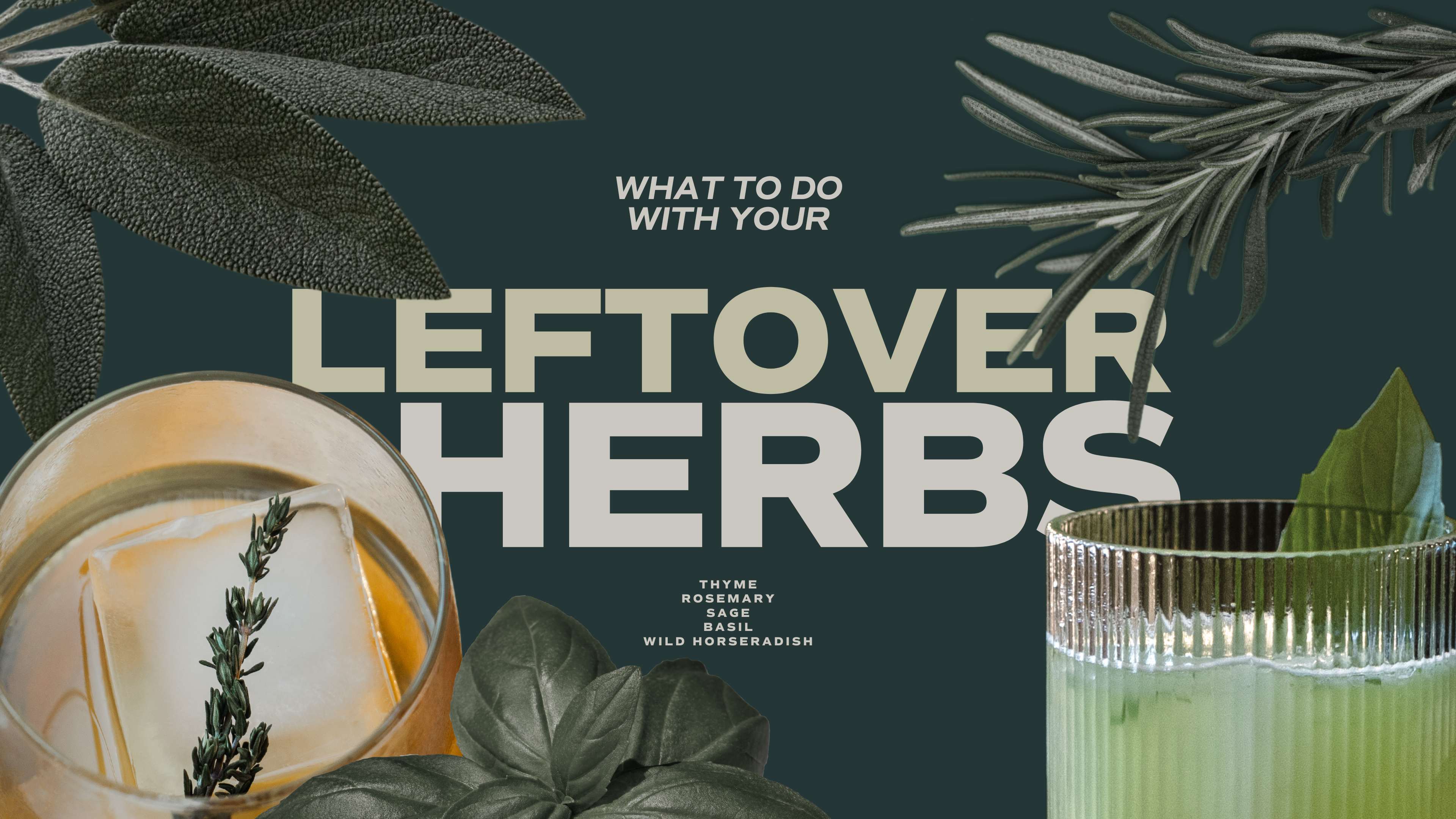
Spring is here! And its much-anticipated return could not be met with more open (albeit very pasty) arms. While some are eager to welcome the warm embrace of sunnier longer days, beer gardens and picnics - we curious drinkers have been patiently waiting for the Great British landscape to transform once more.
For the cocktail enthusiast, April’s abundant bloom donates a deliciously herbaceous bounty for springtime sipping, with April being a particularly apt month to get involved in the foraging frenzy too.
From infusions to a simple garnish, Our Forage, Repurpose and Re-Use blog last Earth Month tackled the herbs waiting to be picked, plucked and pulled, within reason…We talked Wild Horseradish in a Red Snapper, Wild Fennel in a Corpse Reviver, Gorse for a Daiquiri, Salty Irish Dulse Martinis, and Spruce Tip Last Words.
Even those in a concrete jungle can enjoy shopping for ingredients in the heaths, gardens and riverbanks of Putney and Hampstead Heath for example. Take it from us, the potential in your urban surroundings is incredibly underestimated, it just takes knowing what and where to look - and often the answer is, up!
But, granted as London-based enthusiasts, we know not everyone is inclined to ‘rummage’ through the bushes for a drink…so we suggest adopting the ‘repurposing’ mindset instead.
Repurposing your shopping list is a drier and easier approach that can ‘Deliveroo’ nature right through your front door. Repurposing can be as simple as a windowsill, lined with store-bought herbs ready to sunbathe in Spring’s more reliable sunlight. Potted herb gardens are a quick and easy way to visually enhance your drink with an aromatic garnish and bring a sense of the outdoors in. So buckle up, as we’re about to show you 4 simple springtime cocktail recipes that will use up your leftover herbs, right to the very last sprig.
How to Make a Gin Basil Smash
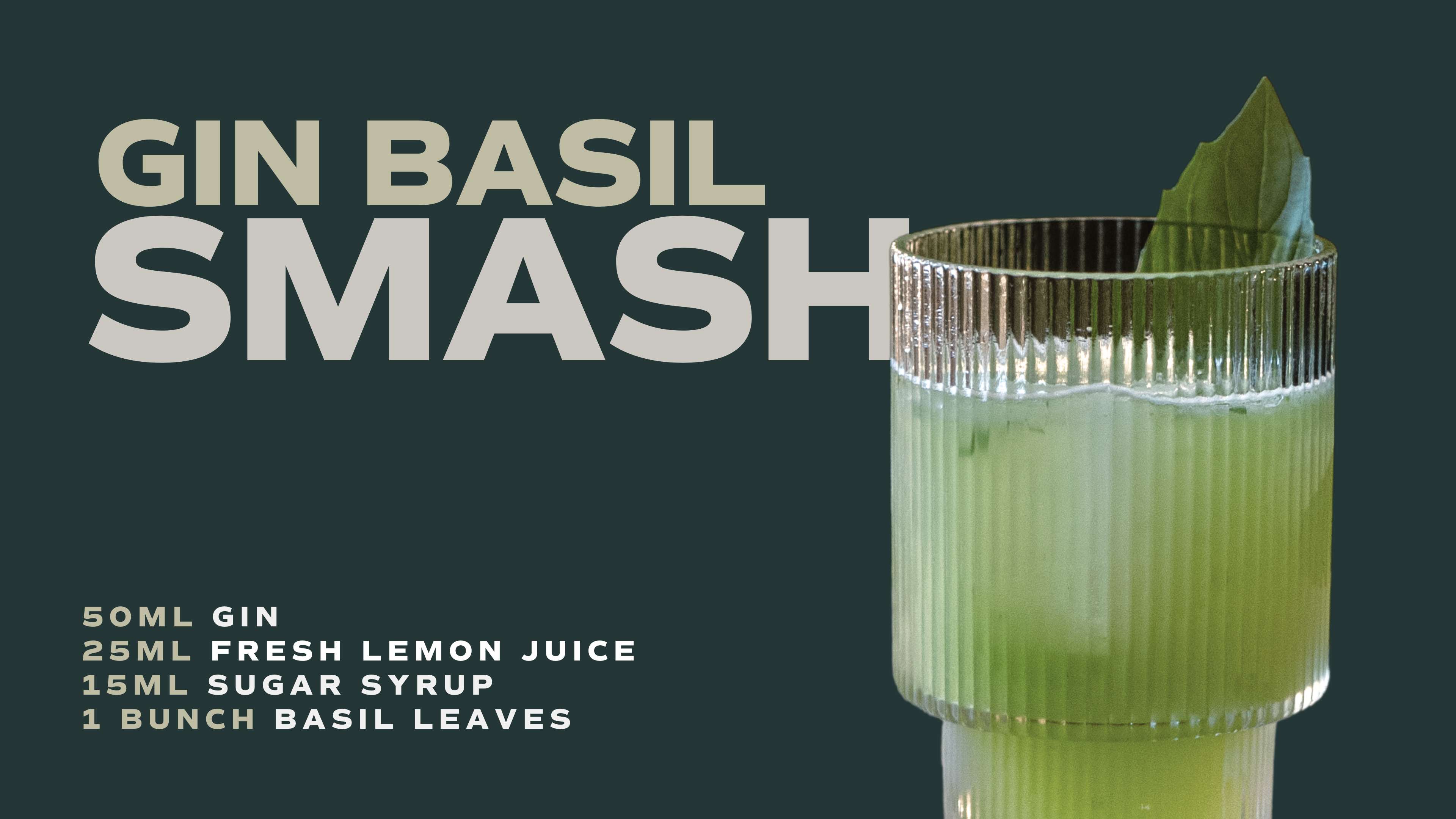
The Gin Basil Smash is a contemporary icon - a modern classic that’s as simple to make as it is mind-blowing to taste. Its alluring neon-green tint might be the thing that draws you in, but it’s the fresh aromatic kick that will have you coming back for more. Besides the addition of fresh basil means it counts as one of our five-a-day right?
Gently muddle 8-10 basil leaves and lemon juice in a cocktail shaker, ‘smashing’ the ingredients together.
Add the sugar syrup and Gin.
Fill your shaker with cubed ice and shake vigorously.
Double strain into a chilled rocks glass with fresh cubed ice.
Garnish with a basil leaf or sprig.
Basil, despite all its bold and pungent flavour, actually allows for so much nuance to come through in the end cocktail - which swiftly takes us onto the Gins we recommend for a Gin Basil Smash.
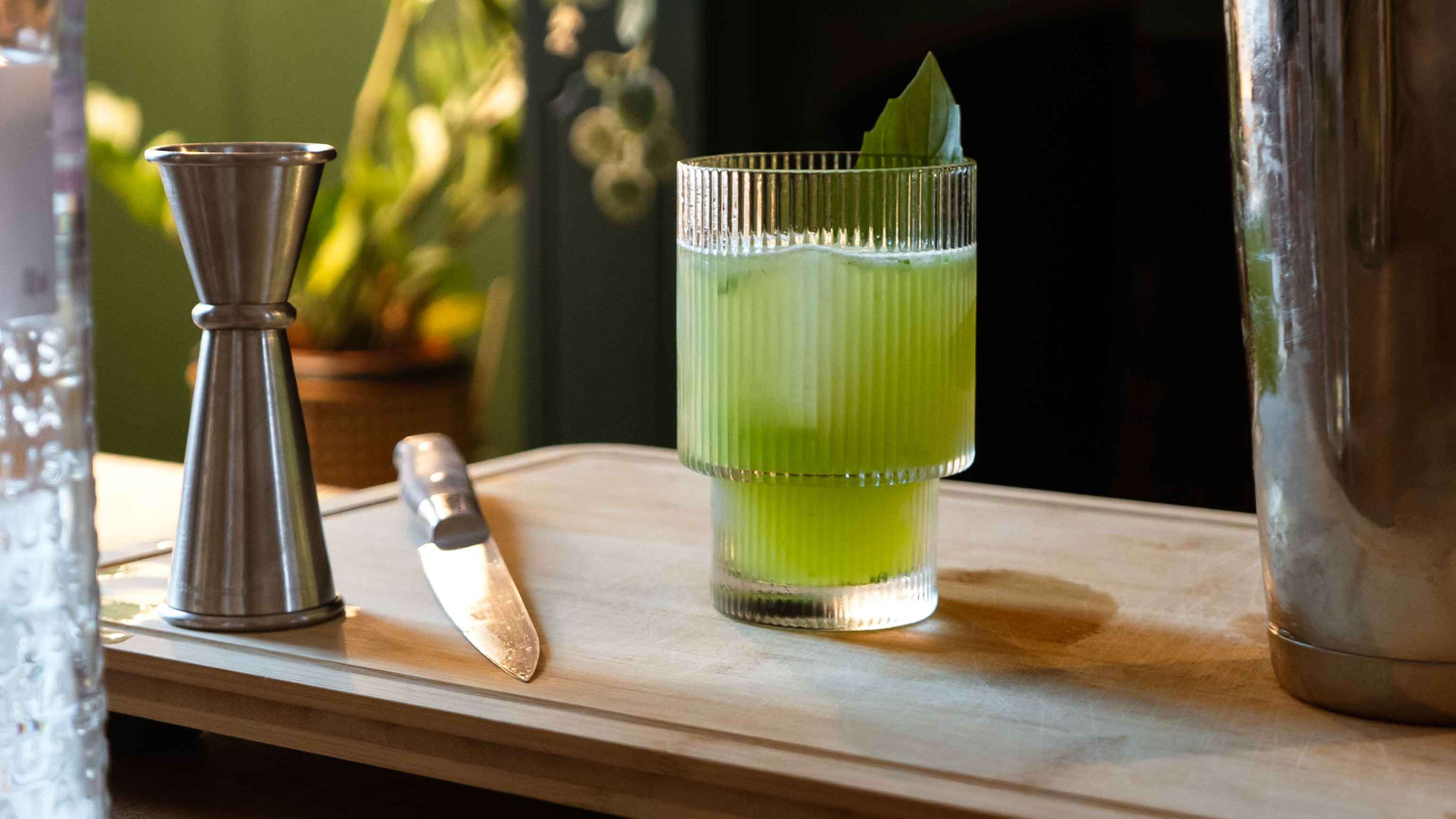
What Gins to Use in a Gin Basil Smash
As we understand it, creator Jörg Meyer, originally used Hendrick’s Gin for its crisp, clean, floral and herbal flavour profile. You need a Gin that can find the careful balance between all its botanicals. Juniper-forward cabinet essentials that tend to work so well in other cocktails are great, but the basil offers an opportunity to be creative. The Basil Smash lends itself better to Contemporary Gins, in particular, those with a big grapefruit twang or those that use fresh herbs.
We used The Botanist Islay Dry Gin in our first Gin Basil Smash of Spring, for its floral nose and distinct sweet juniper hit. Plus, this delicious bottling is a progressive exploration of the botanical heritage of Islay, steeping 22 hand-foraged local botanicals for up to 12 hours. It’s a big batch, but a tasty match that will have you savouring the art of foraging, twice!
Grab the Sage, we're Talking Dirty (Martinis)
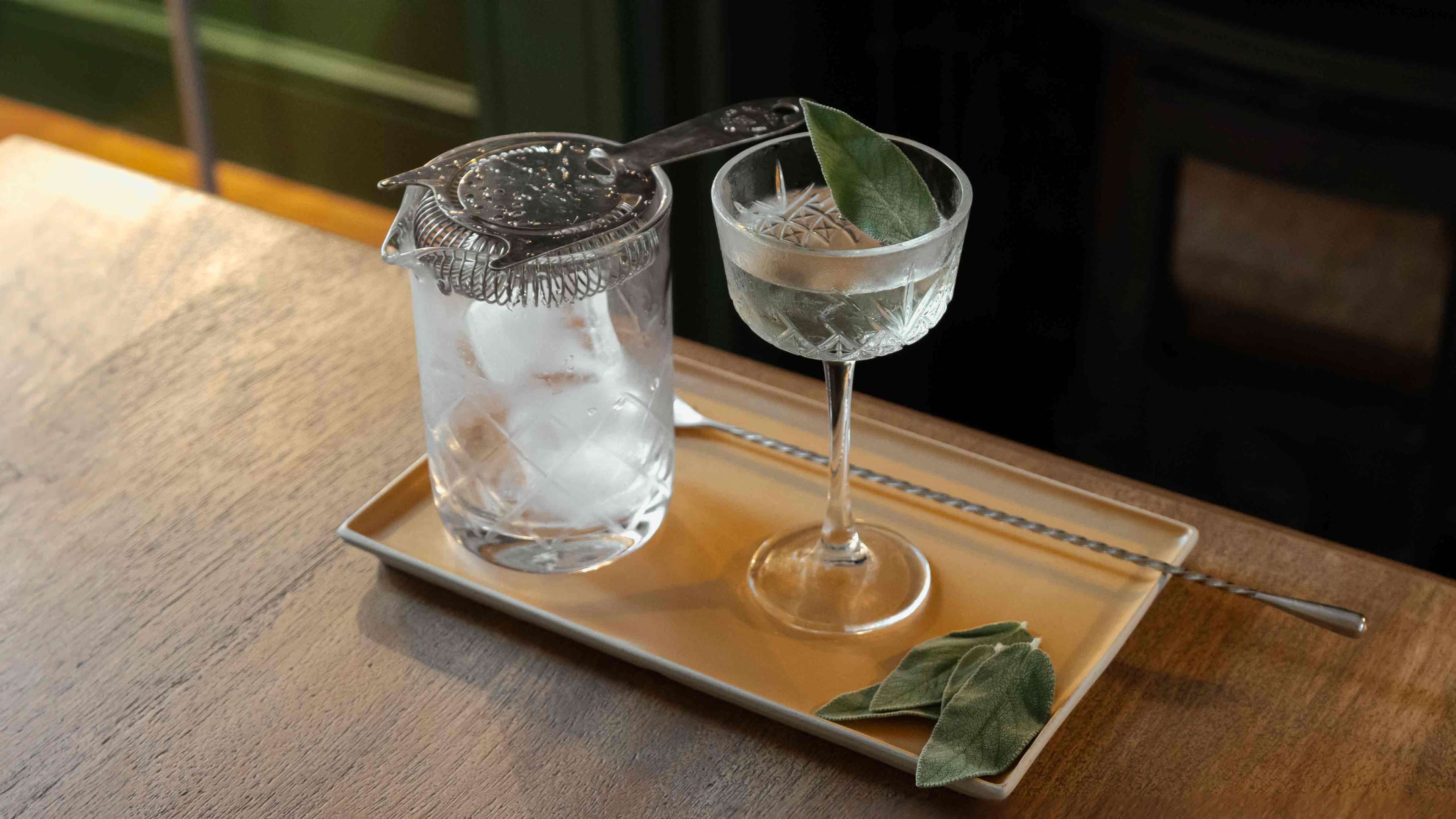
A Dirty Martini calls for Gin, Dry Vermouth and Olive Brine. By definition, the Dirty Martini ought to have a more pronounced savoury quality and a salty, viscous mouthfeel. It’s so simple an idea and yet, by adding a splash of olive juice into a Martini recipe it seems to round out the flavours in a spectacular way. Tangy, salty, briny, and complex - those are the adjectives you’re looking for when describing the perfect Dirty Martini.
Olives are undoubtedly the expected choice of garnish for a Dirty Martini. Heck, even throw in blue-cheesed stuffed olives if you really want. Olives are a tried and tested classic for The Martini, but they also aren’t going anywhere…
Stirring up the best Springtime sipper will in fact have you reaching for the sage instead. There are woody hints of pine, a touch of mint and sometimes even eucalyptus, all contributing an earthy backdrop to the aroma. It’s a heady mix that creates a herbaceous bridge to the gin and olive brine, one to try for those looking to take savoury home cocktails to the next level.
Remember, Opting for restraint over excess goes a long way when making your first Martini, particularly if you’re going to make it Dirty. You want a ‘saline’ mouthfeel, not seawater.

How to Make a Dirty Martini?
Combine all ingredients in a mixing glass with ice.
Stir until chilled and diluted (roughly between 10 - 20 secs depending on how many you’re making).
Strain into a chilled coupe glass.
Garnish with a sage leaf (and or skewered olives)
What to know when ordering (or making) a Martini
‘Dirty’ - means that olive brine, usually from a jar of olives, has been added to the mix. As a starting point, ‘dirty’ is considered to be equal parts Dry Vermouth : Brine. So ‘Extra Dirty’ or ‘Filthy’ typically means more brine. But, you’re at home, and your Martini should reflect that! Don’t be shy to have some fun. Why not try pickle juice brine…and a pickle? Why not try a herbal garnish instead? You never know, you may just stumble across your ideal pairing.
Our editorial sister platform, Spirits Beacon, breaks down all of the Martini Variations you need to know. Wet, Dry, Bone Dry, Gibson and more important terminology to have under your belt if you’re starting to understand why the Martini might just be the best Gin drink out there…
Go-to Spirits for a Dirty Martini
What Gin to Use in a Martini - We always say that juniper-forward spirits offer the best opportunity for the cocktail to shine. In this case, the salt and brine complement the aromatic botanicals in Gin as well as the herbal bitterness of Dry Vermouth
Sustainable Sippers - Warner’s London Dry Gin is a big juniper London Dry that delivers exactly what you want from a classic Gin. Given the craft and home-grown ingredients in the recipe, the taste reflects the uncompromising standards, impressive ethics and sheer graft that goes into making it. Juniper, fresh discarded lemon peel, coriander, elderflower, cinnamon, almond, nutmeg and farm-grown Angelica root will all work beautifully with a herbaceous sage garnish.
Hepple Gin is another recommendation we’ll back - it’s a real celebration of Gin in all its glory with three varieties of juniper included in the mix. Smooth and complex, Hepple is perfect Martini material.
Dry Vermouth - Regal Rogue Daring Dry is led by savoury and light salty notes that create an umami profile. It does so by marrying a grassy Sauvignon Blanc from South Australia with quandong and native thyme for a light aroma. This is followed by white pepper, gentian, and native anise myrtle to taste. It’s really herbaceous in character and its inherent saltiness marries well in a Dirty Martini. One of the few extra-dry vermouths that are quite so quaffable when served on their own.
Noilly Prat Original Dry Vermouth on the other hand is one of the most revered Vermouths and for good reason - it’s a must-have for any Martini maker. On the nose, there is a herbal aroma, balanced with floral notes and hints of chamomile. To taste, the dry white wine emerges with a complex yet delicate bitter finish, laced with a touch of spice.
Thyme for a New Old Fashioned
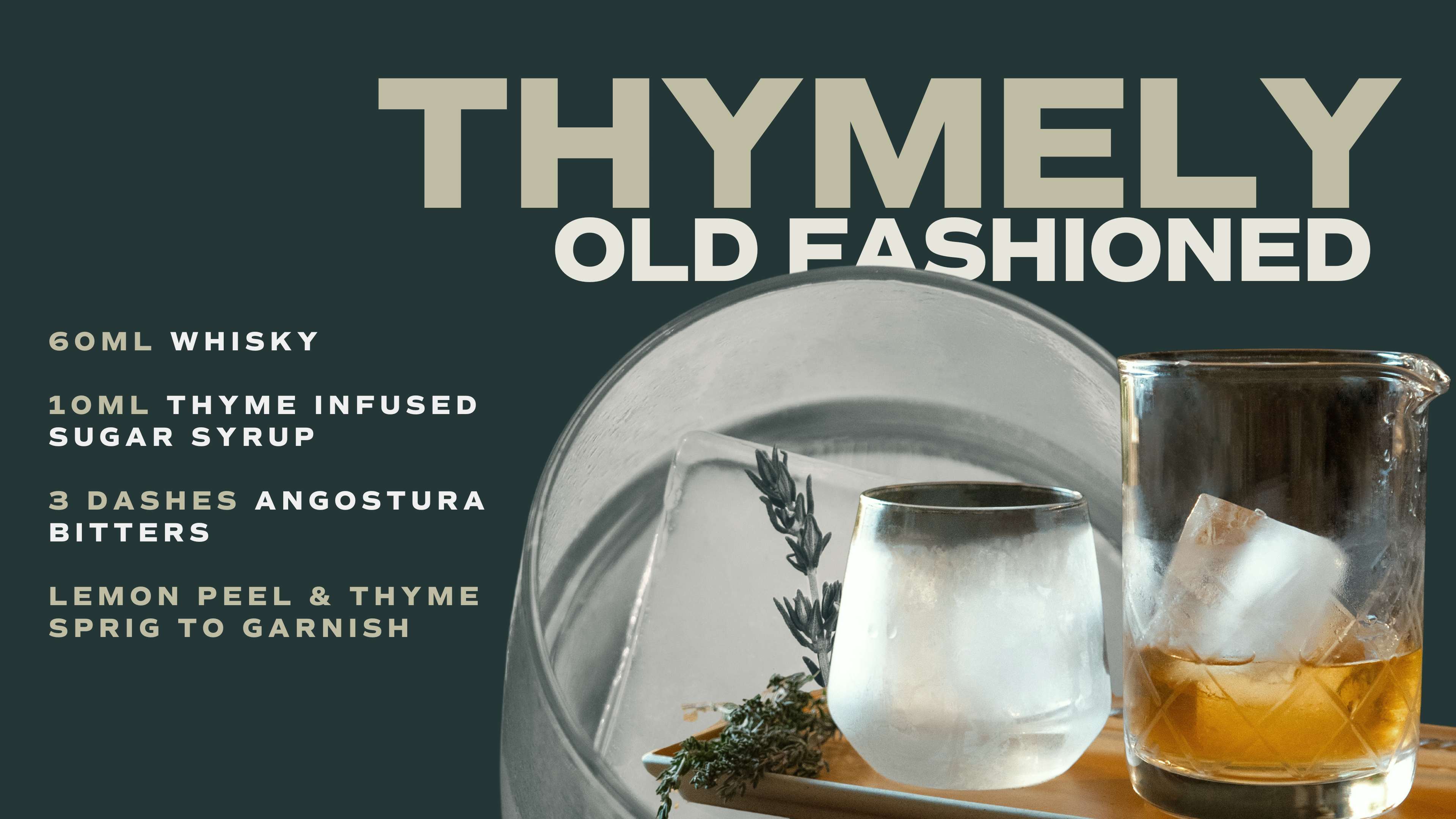
The sparing use of umami-rich herbs, like rosemary or thyme as a garnish, can be a fantastic way to build umami and herbaceous complexity. Savoury isn’t new to the bar world, yet for a flavour profile that can do so much, it’s sadly not a regular feature in many home creations.
Home herbs are a fantastic way to make sure you’re getting the absolute most out of your groceries and a tasty opportunity to connect culinary imbibers in one sip. Waste not, want not - one of our favourite ways to incorporate Thyme into our springtime tipples, is to repurpose any leftover sprigs in a thyme-infused Old Fashioned. A delectable dram that unites whisky and oily citrus with an earthy, herbaceous backdrop.

How to make a Thymely Old Fashioned
Combine Whisky, Thyme Infused Sugar Syrup, and Bitters in a mixing glass with cubed ice.
Stir until chilled and diluted (roughly between 10 - 20 secs depending on how many you’re making).
Strain into a chilled Old Fashioned glass.
Garnish with a sprig of thyme and a fresh lemon peel.
For the whisky, you’re looking for a dram that can stand up to the encompassing spring flavours in the cocktail. Nc’nean Huntress Organic Single Malt Whisky 2022 was the distillery’s first release in their new spring series of whiskies. This bottling is all about their ethos of discovery, combining three yeast varieties, including one that is commonly used to produce rum. The result is a whisky with rich minerality and a honey nature brimming with tropical fruits.
Their flagship whisky is not one to miss either - Nc’nean Organic Single Malt Scotch Whisky is an easy-going malt made from organic Scottish barley, slowly distilled to accentuate the delicate, fruity flavours in the spirit. Lemon rind, peach skins and juicy apricots are the defining notes with spiced rye bread tones emerging on the finish.
We would seriously recommend checking out Nc’nean’s Recipes for more inspiration on how to incorporate herbs like mint, rosemary, and thyme into your whisky cocktails. If you’re stuck on what to make, you can filter their recipe page by season to help inject some seasonality into your cooking and home-drink curation.
Use Rosemary in your next Spring Gin & Tonic
Rosemary is a woody, perennial herb with divine aromas that is incredibly easy to grow yourself. It’s piney and fresh, with a savoury feel, though there is an underlying perfume-like sweetness to it. Its use in the gin-making process itself is usually quite understated as it can be a little medicinal, but when used well it can bring a beautifully long finish to a gin.
The addition of a rosemary sprig when you next fancy a spring-inspired G&T will lend a distinctly herbal feel to the overall serve. Express the decadent oils of a fresh lemon peel and watch the marriage of citrus and herbs take over your glass.

What Gins to Pair with a Rosemary Garnish
Mermaid Zest Gin - Mermaid Zest is as zingy, zesty, and citrussy as they get, adding layers of island-grown bergamot, lemon zest and rosemary onto their signature Dry Gin. You can expect a fresh spray of grapefruit and perfumed bergamot, softened by the herbs and juniper on the nose. To taste, it’s a bright, seasonal statement that lends its herbal core to a great depth of flavour.
Gin Mare - Gin Mare is a vibrant, herbaceous gin packed with beautiful Mediterranean flavours. Rosemary, olive, thyme, basil and juniper all work in unison to create an oily and resinous serve. Expressing fresh citrus will offload a myriad of Mediterranean nuances - it will be the G&T that will have you coming back, time and time again.
Forest Gin - Nature emanates from every sip with this one, positively vibrating with the smells and flavours of the forest. A truly special gin that works well with garnishes of citrus and herbs to accentuate its earthy intentions.
Tanqueray No.10 - If you’re a bit bored of the lemon garnish, opt for a sliver of grapefruit to pair with your rosemary instead. Tanqueray No.10 has a strong citrus core, bursting with bright fresh notes of grapefruit, swiftly backed by soft floral chamomile and juniper. The signature velvety mouthfeel of this gin is unrivalled and a must-have cabinet essential in our books.
And there we have it 4 herbaceously simple cocktail recipes to try this Spring. We’ll be posting the video recipes on our Instagram if you want to see the savoury magic happen in real time!


